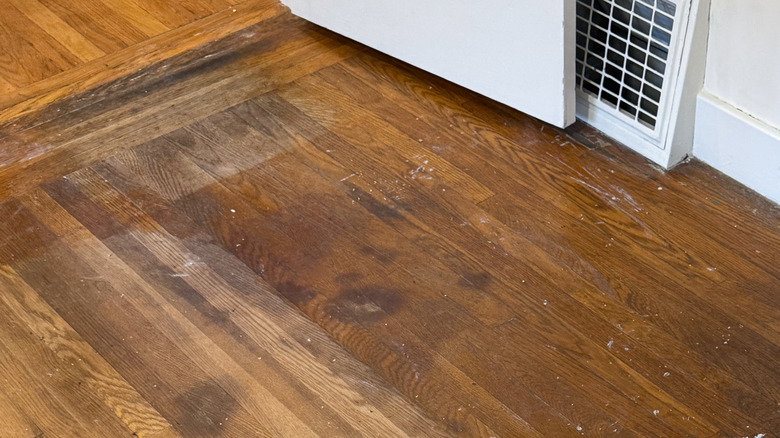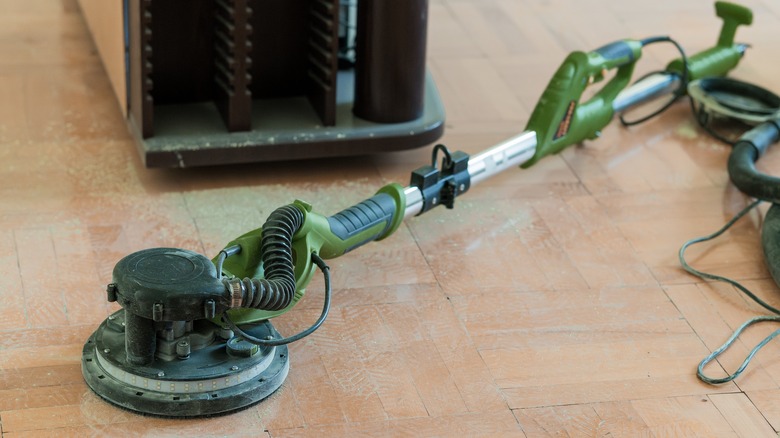White Vs. Dark Water Stains On Wood Floors: What's The Difference? (& Why It Matters)
We may receive a commission on purchases made from links.
As famous as they are for their timeless beauty and natural elegance, hardwood floors can be a high-maintenance nightmare and require regular care to last in your home for years to come. This often means dealing with water stains, an issue that frustrates many homeowners opting for this stunning flooring choice. Water damage on wood can show up as white or dark stains, and the difference in color is a big indicator of how deep the stain goes and how easy the removal will be.
White water stains usually mean moisture is trapped only in the floor's finish and is relatively easy to get out, while dark stains suggest the water has seeped deeper into the wood and will require more intensive treatment or even refinishing. So, if you're looking for an easy fix to bring your water-damaged floor back to life, a white stain will be the lesser evil. But with the right approach (and some effort and patience), you can still successfully handle any type of stain and keep your wood floors in tip-top shape.
Removing water stains on wood floors
Since white or light-colored stains sit on the surface of the wood floor, you should be able to handle them with less sweat. To draw the water out, start by gently rubbing the area with a soft cloth and a small amount of non-gel toothpaste or 1 tablespoon of baking soda mixed with just enough water to form a paste. If these don't work for you, you can even try rubbing the stain with a couple of kitchen ingredients, like vinegar and olive oil or mayonnaise. The acid in vinegar helps break stains down, while the oily nature of olive oil and mayonnaise helps lift the stain to get it out. A hair dryer can also help draw out moisture from fresh stains.
Dark water stains are deeper in the wood and more stubborn, which is why removing them requires more heavy-duty methods. For starters, you'll probably need to sand down the affected area and treat it with a wood bleach (like oxalic acid) to lighten the stain. Afterward, refinish the area to protect it and match the rest of the floor.
If you've exhausted your options or aren't comfortable with tackling the problem on your own, it could be time to call in a professional. No matter what type of stain you're battling, try to act fast — water stains are easier to treat the earlier you catch them. Once the stain is gone for good, keep your floors dry and well-sealed to avoid finding water damage on your wood floors in the future.

